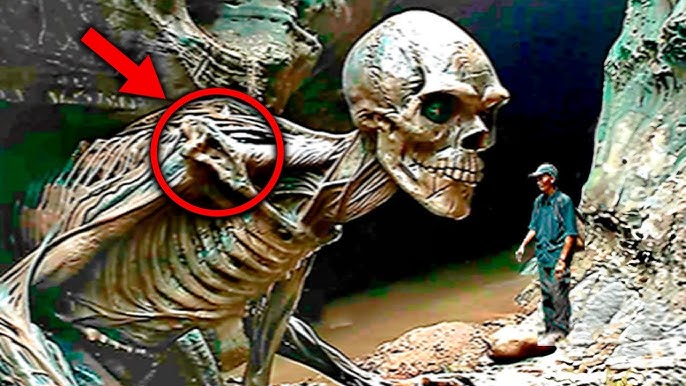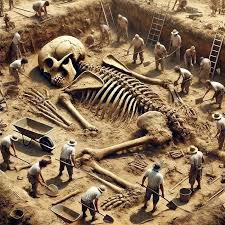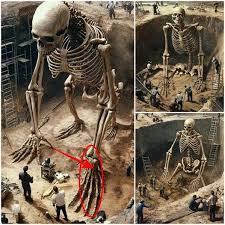A stunning archaeological discovery unveils a massive skeleton with shocking evidence of early upright posture, challenging everything we know about human evolution
The claim of a stunning archaeological discovery of a massive skeleton with shocking evidence of early upright posture, challenging everything we know about human evolution, is a dramatic and sensationalized framing of a topic that is central to paleoanthropology. While there have been groundbreaking finds of ancient hominin skeletons, a single discovery that completely “rewrites everything” is highly improbable. The term “massive skeleton” is particularly misleading, as early hominins were generally smaller than modern humans. This type of claim often sensationalizes genuine scientific progress to create an air of mystery and a false sense of a paradigm-shifting event.

In reality, the story of human evolution is a constantly unfolding narrative, with each new fossil find adding another piece to a complex puzzle. While no “massive” skeleton has been found, significant discoveries have indeed provided key insights into the development of bipedalism, or upright walking. For example, the discovery of “Lucy” (Australopithecus afarensis) in 1974 gave us a 3.2-million-year-old skeleton that showed clear evidence of bipedalism through her pelvic and leg bone structure, even though she was small. Similarly, the 3.6-million-year-old Laetoli footprints, found in Tanzania, offer a direct, tangible record of three early hominins walking upright. These finds didn’t “challenge everything,” but rather, they confirmed and provided new details about a theory that had been building for years.

More recent discoveries continue this process of refinement. The 2013 find of Homo naledi in South Africa, for instance, presented an unprecedented find of over 1,500 fossil pieces from a small-brained hominin that had a surprising mix of primitive and modern traits, including feet well-suited for upright walking. The fact that these remains were found deep inside a cave, a location that required both modern and primitive locomotion to access, has added a fascinating layer to the debate on early hominin behavior and burial practices. Rather than a single “shocking” find, our understanding of human evolution is built on a steady stream of such meticulous, incremental, and well-documented discoveries that, piece by piece, clarify our past
